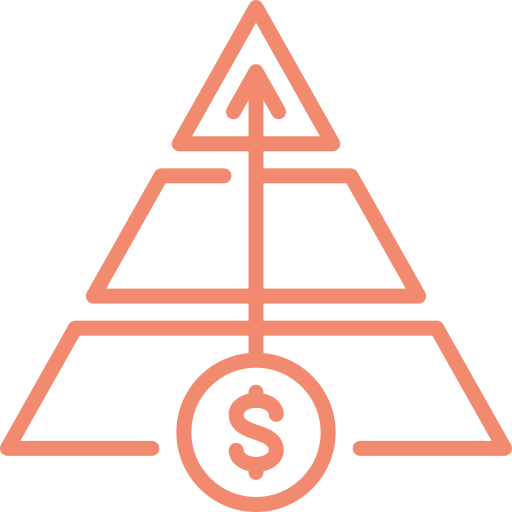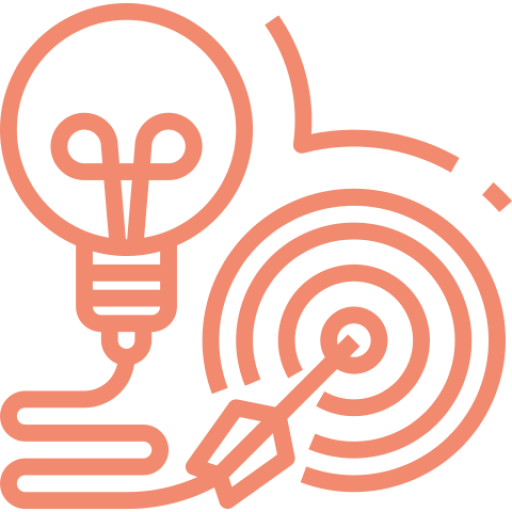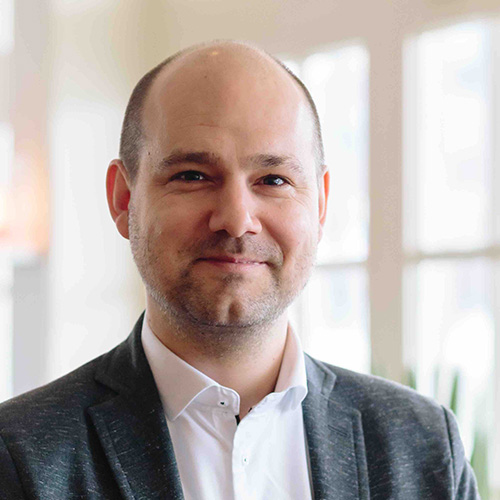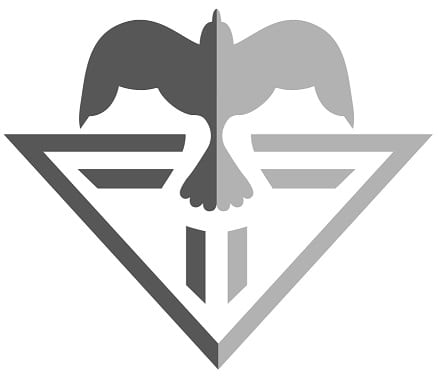MAPPING AND APPROACHING NEW DONORS
Addressing SOME COMMON QUESTIONSFundraising is certainly a strenous yet worthwhile journey. The challenges and rewards of fundraising especially increase substantially when it comes to finding new donors. How can NGOs position themselves to convince a new donor? What is the fundraising strategy to map and target new donors? Where is the starting point of approaching new donors?
Here are Han’s answers and insights to some of the common questions and topics about fundraising with new donors. This is a part of our Q&A series with Han. You can watch the entire recordings on our YouTube channel!

What is the best strategy to approach a new donor?
The important thing to know when you are approaching a new donor is that these donors probably don’t know you so well. That means you need to work on your reputation and your relationships. My advice, not knowing the full context of any specific organization, is to first invest in the relationship with the specific donor before talking about money. It’s important to know what their needs are and what the objectives of these foundations are.
Their objectives may not be exactly the same as the “About Us” section on their websites. You may want to consider their strategic plans, for example. If a foundation is re-considering its strategy, that information won’t be available on the website. You won’t see their long-term goal until the new strategy is published. If you don’t know that, it will be very difficult to make a bid. It’s important to invest in the relationship and to figure out the people in these big organizations that can help your funding application in the long term or will make the strategic decisions. Try to connect with that person, build the relationship, and, if possible, meet face-to-face because that would make a huge difference. It is not possible to do so amidst the current circumstances. And sometimes, if the donor is far away, it is also very difficult. You can still use Zoom or Skype — that’s the second-best option.
Connect, make it personal, and listen first before trying to sell your project to the donor.
More importantly, try to listen first before you are going to talk to the donor. If you know what they are telling you, you can adjust your story toward them. You would then have a better position to get them excited about working together with you. Connect, make it personal, and listen first before trying to sell your project to the donor.

We have looked at the US foundation market and have seen many possibilities. Should we target the larger and better-known foundations or is it better to start with the smaller ones?
There are over 100.000 active foundations in the US so there are a lot to choose from. Most organizations, that are targeting the US without doing a lot of homework, start with 10 largest foundations — the Gates Foundation, the Ford Foundation, the MacArthur Foundation, Rockefeller Foundation, etc. You hear about these names a lot and you can see them in a quick Google search. These big foundations fund many types of activities. However, it is also extremely difficult to get their funding, for the simple reason that everyone who does that Google search will find them too. These large foundations get so many applications, sometimes hundreds a week and you are just one of those applications. Your success rate is not going to be extremely high unless you work on your reputation and visibility and they know that your application is coming.
The smaller foundations are a lot easier because people don’t find them and there are good databases on how to find them and you’ll have better opportunities there. The problem with smaller foundations is that the possibility to grow your funding with them is more limited. While you may get a US$100k grant from a small foundation, if you ask for half a million for a subsequent project, they may not be able to find you so much. There is also a middle category – the large foundations that can fund up to a million dollars, but they are a bit more difficult to find.
The general advice for all nonprofits before submitting a proposal is to assess thoroughly if your project may fit with their policies. Your project may fit with the values and focus areas of the Gates Foundation but the more important question is whether the Gates Foundation is looking for your project. If you are not sure, you need to do your homework better. There are many ways to do it, especially for the US foundations as they publish their annual reports that they submit to tax authorities, the 990 forms. Foundations are obliged to explain what they have funded in the past.
Before submitting a proposal, all nonprofits should assess thoroughly if their projects may fit with the policies of their potential donors.
If you are an organization working in education and you see that foundation funds education, you may think that it’s a match. But education is an enormous field with a lot of variety in the types of project. Are you building a school? Are you working on curricula? Are you training the teachers? Are you are bringing kids from villages to schools? If you see those 990 forms, you can see what kind of projects they have funded in the past and you can see that this foundation is active in the field in the past, but are they funding bricks or policies in education? This is what you can find out in these forms and based on that, you can make a better decision to see if this is a good opportunity or not. It’s a lot of work but it’ll save you a lot of time and resources in the long run.

How do you convince the donors to fund you, a startup organization if you don’t have many past projects as references?
If you don’t have many relevant past projects, it’s a challenging task to convince donors about your expertise and capabilities. They will have many questions on your implementation capacity. If they are new to your organizations, they would have to trust you and that would be not be easy unless you have invested significantly in the personal relationships with the donors.
Nonetheless, all new, start-up organizations have one advantage. Many foundations and institutional donors frequently look for innovation and this is something startups do by definition. While other competing organizations who have existed for 50 years may proclaim their innovativeness, their histories may prove otherwise, and their level of innovation may be lower than your case. Additionally, you are probably faster and more flexible and can readily adapt to the conditions of the donors. There are some advantages that you have.
All new, start-up organizations have one advantage. Many institutional donors frequently look for innovation and this is something startups do by definition.
If it’s not going to convince all donors, you could consider working in partnership with other organizations that do have track records as a consortium to submit a proposal. Some organizations may find it difficult to show their innovation, for example. They may be very interested in working with you and together, you can submit a proposal. If you both manage to get the grant, you can do some implementation. That’s also possible. All successful NGOs started somewhere one day and you can be the next success story.

The donor website says that they do not accept unsolicited proposals, but it seems like a good match. Any advice?
The first question we need to ask is why don’t they do that? The main reason why they don’t accept unsolicited proposals is that they don’t want to receive many proposals, more than they could handle. They know what their focus areas are and they know the main players in the field. It is easier and cheaper for them to reach out to only a handful of familiar organizations for proposal submission. As they know the market well and what they want to fund, this approach works very well for them.
If you see a very good opportunity there, it is good to figure out if you can start with some networking first. The goal is to become one of happy few that they’ll reach out to submit a proposal. This strategy is not about working on the proposal immediately but first, finding the right people in the foundation and start building relationships with them. Engage with them, listen to their needs, and try to connect with them for more details when you see a funding opportunity. When the excitement is there for both sides, they’ll invite you to submit a proposal.
Your strategy is not to work on the proposal immediately but first, to find the right people in the foundation and start building relationships with them.
That costs time and that’s the downside of it. Writing a proposal is something you can do for a few weeks behind a computer. If you start engaging with a donor, that takes a lot more time. It may take a few years before they can like you enough to add you to their shortlist. However, your success rate would automatically be a lot higher when you are the selected few invitees and not one of the hundred organizations that submit proposals per week that they have to evaluate.

What are the typical fundraising mistakes when mapping and approaching donors?
A typical mistake is that when organizations put a lot of time into building relationships and writing proposals, they may forget a few basics. We see these mistakes a lot and they can cost a lot of money and opportunities. For example, they forget to check carefully the qualifying criteria and donor requirements and they assume that they tick all the boxes. They only find out a few days before submission that they don’t have all the criteria and policies. If they would have known 4 or 6 weeks earlier at the start of the proposal development phase, they could have made adjustments and solved the problem. Or something that happened last year was that a proposal needed an ink signature of the CEO. However, the CEO was traveling in that week and no one thought about getting the signature from the CEO beforehand. That was a mistake that could have been prevented by having his signature in a stamp or by having a signed empty sheet before adding proposal texts. These are simple problems that could have been solved but they have big impacts.
On mapping and approaching donors, I think one of the biggest issues is that organizations are not focused enough. Rather than committing to their top 5 or top 10 donors, they spread their resources and energies over too many donors. Subsequently, they do not have enough capacities to invest into each donor. Their fundraising efforts become too low-quality and they often leave empty-handed. It’s important to focus on specific donors and opportunities.
One of the biggest issues is that organizations are not focused enough. Rather than committing to their top 5 or top 10 donors, they spread their resources and energies over too many donors.
One last thing that is more difficult to manage is internal politics. Many submitted proposals were not necessarily the best because of the mismanagement of ego and internal politics. Someone may have shouted the loudest or someone may have owed somebody something in the organization, and as a result, a low-quality proposal was submitted. Ego is connected to that internally, but also externally as well. An organization may insist to be the lead applicant when a consortium was submitting a proposal because they like the idea that it is their projects that gets the funding. However, the donor is less interested in that. They look at what is the right balance in the consortium, whether the right organization is leading this, or they have the right track record. Because of these criteria, they score fewer points and some good proposals didn’t win because of the ego of the organizations. As long as you put your vision and the impact you want to achieve first, these types of things can be solved.
These questions and answers are part of our webinar series ‘Q&A on Fundraising’. Visit our YouTube channel to watch more. We have covered a variety of topics from proposal writing to fundraising pitfalls. We are planning to discuss many new topics in the future. Subscribe and follow our social media channels for the latest!

Han Valk
Han is the founder and a fundraising consultant of Han Valk Fundraising Consultancy & Interim Management. He is dedicated to support non-profits by offering practical, tailor-made and flexible solutions on all fundraising levels. The way he would have liked to be supported when he was head fundraising the past ten years. Rather than providing broad concepts, his tools and advice can be implemented directly in your organization.
TOPICS ADDRESSED
- What is the best strategy to approach a new donor?
- Should nonprofits target the larger and better-known foundations or is it better to start with the smaller ones?
- How do you convince donors to fund you, a startup organization, if you don’t have many past projects as references?
- The donor website says that they do not accept unsolicited proposals, but it seems like a good match. Any advice?
- What are the typical fundraising mistakes when mapping or approaching donors?
stay up to date
We have at heart to be a resource to you. According to your preference, we will share insights, trainings, networking events and career opportunities that might be of interest for anyone from entry-level to seasoned professionals.
Contact
Phone
+31 (0)6 30 69 45 95
Address
Eursinge 8, 7935AB Eursinge (de Wolden), The Netherlands
228 East 45th Street, Suite 9E New York, NY 10017, USA
info@hvfc-international.com
Join us on
© 2024 HVFC International. All rights reserved.
HVFC ® is a registered trademark of HVFC International B.V.
